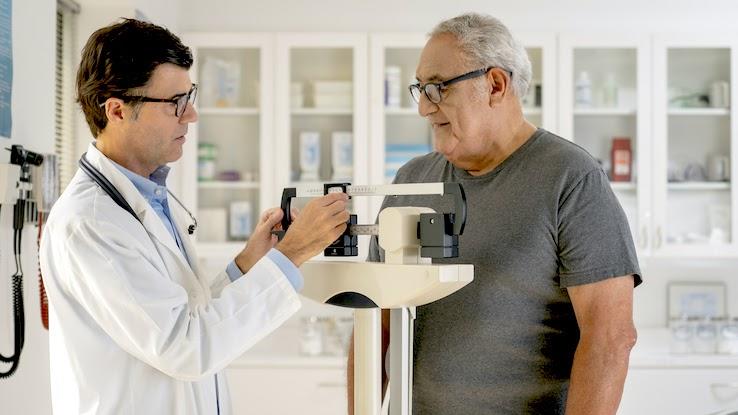
With obesity becoming increasingly common among millions of people in the United States, there have been more advances in medicine to effectively treat this health condition. For those who haven’t found lasting success with other weightloss methods, laparoscopic gastric bypass surgery may be an option that can lead to a healthier life long term.
What Are the Goals of Laparoscopic Gastric Bypass Surgery?
The purpose of gastric bypass surgery is to result in weight loss and reduce the metabolic consequences of obesity. The surgery does this by changing the size of your stomach and altering how your body processes food you’ve eaten. By making these changes during the surgical procedure, gastric bypass surgery limits how much you can eat and reduces your body’s ability to absorb nutrients.
- Laparoscopic gastric bypass surgery is the form of this weightloss procedure that’s considered the least invasive. Another benefit of this surgery is that it’s a prevalent type of weightloss surgery and is widely considered to be safer because it tends to have fewer complications than other similar surgeries.
- Even though it’s less dangerous than other weightloss surgeries, laparoscopic gastric bypass can still have serious side effects and risks. Additionally, it’s not right for everyone. The ideal candidates are people of size who are considered obese. According to the Mayo Clinic, to be eligible for gastric bypass surgery, an individual is typically:
- Required to have a body mass index (BMI) of at least 40, or
- Required to have a BMI of at least 35 combined with serious weight-related health problems, such as Type 2 diabetes or high blood pressure
Before you can be considered for the surgery, you’ll be required to lose some weight with diet and exercise to demonstrate that you’ll be able to adapt to your new post-surgery diet. You’ll also need to agree to make permanent changes to your lifestyle to ensure the surgery is successful and effective.
What Does the Gastric Bypass Procedure Involve?
Before your procedure, you’ll be given general anesthesia that makes you unconscious throughout the surgery. While operating, the surgeon uses small instruments and special techniques to make the surgery as minimally invasive as possible. To begin, the doctor makes four to six small openings in your abdomen. They’ll then pass tiny lights, cameras and surgical instruments through these incisions to perform the surgery. This is where the name of the surgery comes from; the tiny cameras used to complete the procedure are called laparoscopes.
Then, your abdomen is inflated with carbon dioxide to allow more space for the surgeon to work and see your stomach and intestines. After this, a large portion of your stomach is bypassed, leaving only a tiny bit to function for food digestion. The surgeon accomplishes this by stapling your stomach so the top section remains functional.
Next, the surgeon connects a part of your small intestine to a hole in the functional section of your stomach. This alters your digestive system in a way that causes food to travel from the small, functioning part of your stomach to your small intestine, allowing you to eat less and absorb fewer calories. Once your small intestine has been connected, the surgeon closes the openings in your abdomen, and the procedure is complete. The entire surgery usually takes between two and four hours.
Recovering From Gastric Bypass Surgery
One of the most significant benefits of laparoscopic gastric bypass surgery is that it leads to a shorter and less painful recovery than regular gastric bypass surgery. It also leaves much smaller scars and lowers the risk of infection.
After the surgery is complete, you’ll need to stay in the hospital for one to three days. Most people need to take time off of work for a few weeks to fully recover. That means you’ll need plenty of rest at home and may need to replace bandages regularly. Another essential part of recovery is that you’ll follow strict eating guidelines while your stomach heals. This is important because your stomach has been dramatically changed during the surgery.
Recovering From Gastric Bypass Surgery
Typical Results of Laparoscopic Gastric Bypass Surgery
According to The Cleveland Clinic, the most significant weight loss occurs in the first year after the surgery has been completed. In addition to helping you lose weight, laparoscopic gastric bypass surgery also helps prevent potentially fatal health conditions that are often associated with being obese. People who’ve had successful laparoscopic gastric bypass surgeries have a reduced risk of developing the following health conditions:
- Heart disease
- Type 2 diabetes
- Stroke
- High blood pressure
- Gastroesophageal reflux disease
- Severe sleep apnea
Many patients who have this surgery lose dramatic amounts of weight. In fact, many people often decide to have plastic surgery later on to remove excess skin that remains from when they were heavier. However, your results will depend upon how successful you are in changing your lifestyle permanently. This means that eating limited amounts of healthy food and exercising regularly have to become part of your routine after having laparoscopic gastric bypass surgery.
Finally, it’s important to note the potential side effects of having this surgery. Not all results are perfect; some people experience ulcers, hernias, gallstones, diarrhea or bowel obstructions after surgery. These are considered long-term complications that may appear months or years after recovering from the procedure. Additionally, there are immediate risks of having this type of major surgery, such as bleeding, infection, breathing problems and blood clots. Be sure to discuss all the possible risks and side effects with your surgeon before deciding to proceed with laparoscopic gastric bypass.
Resource Links:
https://www.ncbi.nlm.nih.gov/books/NBK518968/
https://www.ncbi.nlm.nih.gov/pmc/articles/PMC1356513/
https://www.ncbi.nlm.nih.gov/pmc/articles/PMC4223247/





